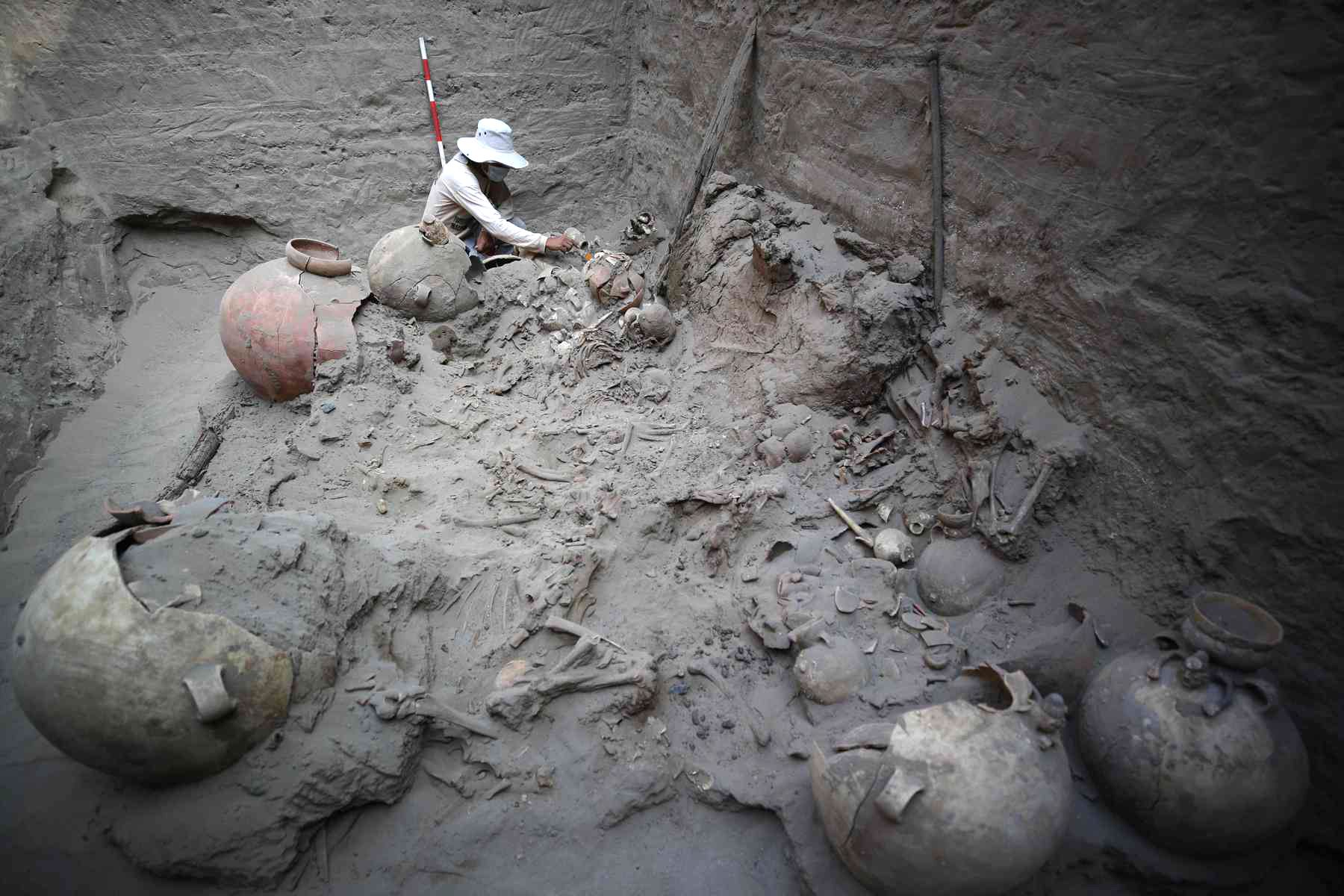Archaeologists unearth tomb of elite figure of the Chancay culture
The Chancay were a pre-Hispanic civilization that developed in the last part of the Inca Empire on the central coast of Peru around 1000 to 1470 AD.
The culture created large urban centers with pyramid-shaped mounds and complex buildings, organized within different types of settlements or ayllus that were controlled by leaders or curacas.

Archaeologists from the Universidad Nacional Mayor de San Marcos, led by Pieter Van Dalen Luna, discovered the tomb in a cemetery in the Chancay Valley dating from 1000 to 1400 AD.

Image credit: Universidad Nacional Mayor de San Marcos.
The tomb is a sunken well that measures six meters deep and contains the remains of a Chancay elite protected by a large bundle. Also found are the remains of five other people who, according to the team, could be relatives, children or sacrificed servants.
A unique find in the tomb is the discovery of a wooden oar, of which no other examples have been found to date during excavations of more than 80 Chancay burials in the cemetery.
Next to the burials are the remains of four llamas sacrificed in honor of the deceased and 25 ceramic vessels containing food offerings to serve the dead on their journey to the afterlife.

More studies still need to be done to determine the age, sex and possible causes of death of the individuals in the tomb, which researchers hope to determine through anthropological analysis.
Excavations at the cemetery previously uncovered a grave containing the remains of two adults and a child buried alongside ceramic vessels filled with the remains of corn, fruit and cotton seeds, as well as the remains of guinea pigs sacrificed as part of a funeral ritual.





